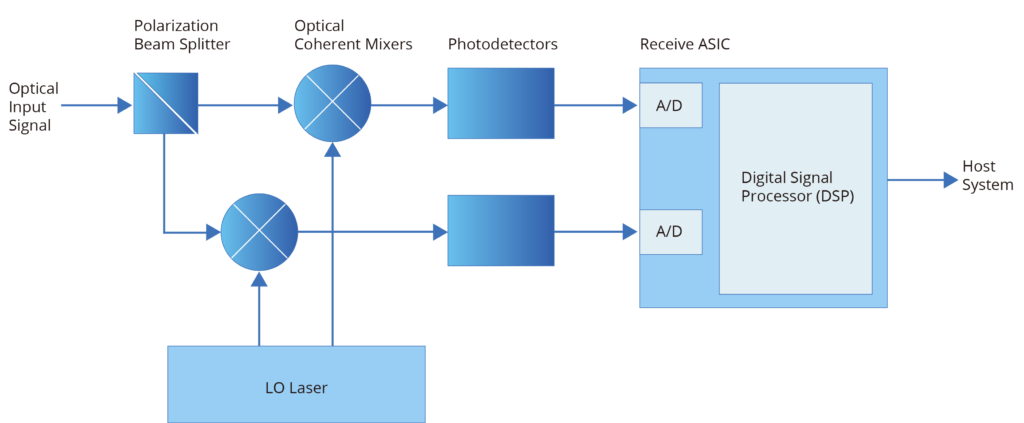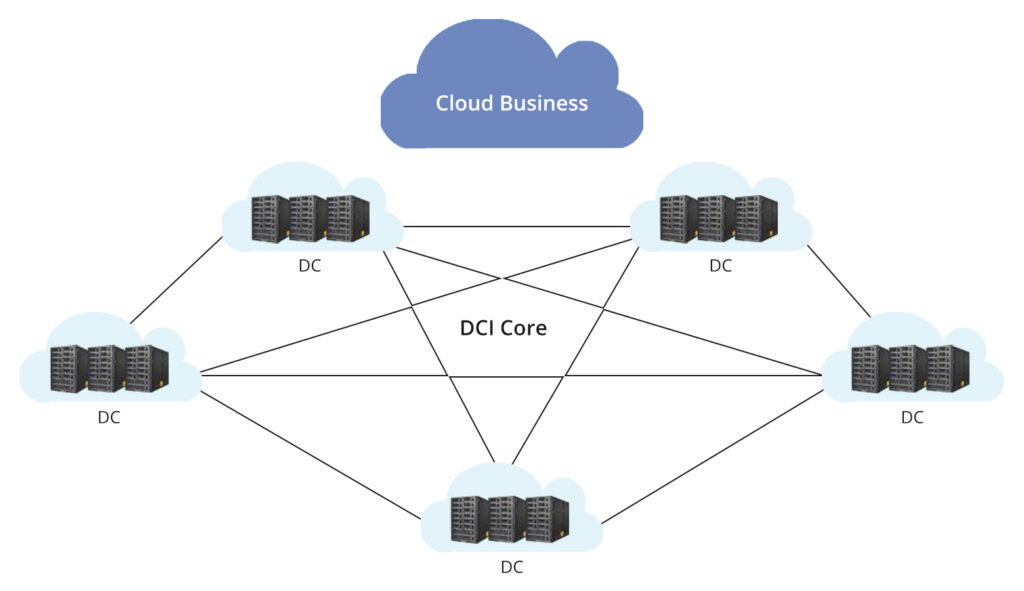Introduction
As network cloudification accelerates, business traffic increasingly converges in data centers, leading to rapid expansion in the scale of global data centers. Currently, data centers are extending their reach to the network edge to cover a broader area. To enable seamless operation among these data centers, interconnection becomes essential, giving rise to data center interconnection (DCI). Metro DCI and long-distance DCI are the two primary application scenarios for DCI, with the metro DCI market experiencing rapid growth.
To meet the growing demand for DCI, networks must embrace new technologies capable of delivering the necessary capacity and speed. Coherent optics emerges as a key solution, leveraging synchronized light waves to transmit data, in contrast to traditional telecommunications methods that rely on electrical signals.
But what exactly is coherent optics, and what advantages does it offer? This article aims to address these questions and provide a comprehensive overview of coherent optics.
What are Coherent Optics?
At its core, coherent optical transmission is a method that enhances the capacity of fiber optic cables by modulating both the amplitude and phase of light, along with transmission across two polarizations. Through digital signal processing at the transmitter and receiver ends, coherent optics enables higher bit-rates, increased flexibility, simpler photonic line systems, and enhanced optical performance.
This technology addresses the capacity constraints faced by network providers by optimizing the transmission of digital signals. Instead of simply toggling between ones and zeroes, coherent optics utilizes advanced techniques to manipulate both the amplitude and phase of light across two polarizations. This enables the encoding of significantly more information onto light traveling through fiber optic cables. Coherent optics offers the performance and versatility needed to transport a greater volume of data over the same fiber infrastructure.

Technologies Used in Coherent Transmission
The key attributes of coherent optical technology include:
Coherent Detection
Coherent detection is a fundamental aspect of coherent optical transmission. It involves precise synchronization and detection of both the amplitude and phase of transmitted light signals. This synchronization enables the receiver to accurately decode the transmitted data. Unlike direct detection methods used in traditional optical transmission, coherent detection allows for the extraction of data with high fidelity, even in the presence of noise and signal impairments. By leveraging coherent detection, coherent optical systems can achieve high spectral efficiency and data rates.
Advanced Modulation Formats
Coherent optical transmission relies on advanced modulation formats to further enhance spectral efficiency and data rates. One such format is quadrature amplitude modulation (QAM), which enables the encoding of multiple bits of data per symbol. By employing higher-order QAM schemes, such as 16-QAM or 64-QAM, coherent optical systems can achieve higher data rates within the same bandwidth. These advanced modulation formats play a crucial role in maximizing the utilization of optical fiber bandwidth and optimizing system performance.
Digital Signal Processing (DSP)
Digital signal processing (DSP) algorithms are essential components of coherent optical transmission systems. At the receiver’s end, DSP algorithms are employed to mitigate impairments and optimize signal quality. These algorithms compensate for optical distortions, such as chromatic dispersion and polarization mode dispersion, which can degrade signal integrity over long distances. By applying sophisticated DSP techniques, coherent optical systems can maintain high signal-to-noise ratios and achieve reliable data transmission over extended distances.
In addition to the above, key technologies for coherent optical transmission also include forward error correction (FEC) for error recovery, polarization multiplexing for increasing transmission capacity, nonlinear effect suppression to combat signal distortion, and dynamic optimization real-time monitoring and adaptation. Together, these technologies improve transmission reliability, capacity and adaptability to meet the needs of modern telecommunications.
Advantages of Coherent Optics in DCI
Coherent optical transmission plays a crucial role in interconnecting data centers, finding wide application in various aspects:
- High-speed Connectivity: Interconnecting data centers demands swift and reliable connections for data sharing and resource allocation. Coherent optical transmission technology offers high-speed data transfer rates, meeting the demands for large-scale data exchange between data centers. By employing high-speed modulation formats and advanced digital signal processing techniques, coherent optical transmission systems can achieve data transfer rates of several hundred gigabits per second or even higher, supporting high-bandwidth connections between data centers.
- Long-distance Transmission: Data centers are often spread across different geographical locations, necessitating connections over long distances for interconnection. Coherent optical transmission technology exhibits excellent long-distance transmission performance, enabling high-speed data transfer over distances ranging from tens to hundreds of kilometers, meeting the requirements for long-distance interconnection between data centers.
- High-capacity Transmission: With the continuous expansion of data center scales and the growth of data volumes, the demand for network bandwidth and capacity is also increasing. Coherent optical transmission technology leverages the high bandwidth characteristics of optical fibers to achieve high-capacity data transmission, supporting large-scale data exchange and sharing between data centers.
- Flexibility and Reliability: Coherent optical transmission systems offer high flexibility and reliability, adapting to different network environments and application scenarios. By employing digital signal processing technology, they can dynamically adjust transmission parameters to accommodate various network conditions, and possess strong anti-interference capabilities, ensuring the stability and reliability of data transmission.
In summary, coherent optical transmission in data center interconnection encompasses multiple aspects including high-speed connectivity, long-distance transmission, high-capacity transmission, flexibility, and reliability, providing crucial support for efficient communication between data centers and driving the development and application of data center interconnection technology.
To achieve the above high-performance data transmission effect, I highly recommend you explore FS coherent 200-400G DWDM. These modules offer high-speed data transmission and increased bandwidth capacity, making them ideal for enterprise networking, data centers, and telecommunications.

Final Words
With data centers expanding globally and traffic converging, seamless operation becomes imperative, driving the need for DCI. Coherent optics ensures high-speed, long-distance, and high-capacity data transfer with flexibility and reliability by optimizing fiber optic cable capacity through modulation of light amplitude and phase. Leveraging key elements like coherent detection and advanced modulation formats, it enhances transmission reliability and adaptability, advancing DCI technology.
How Can FS Help You?
Start an innovation journey with FS, a global leader in high-speed networking systems, offering premium products and services for HPC, data center and telecommunications solutions.
Ready to redefine your networking experience? With cutting-edge research and development and global warehouses, we offer customized solutions. Take action now: sign up to learn more and experience our products through a free trial. Elevate your network to the next level of excellence with FS.
